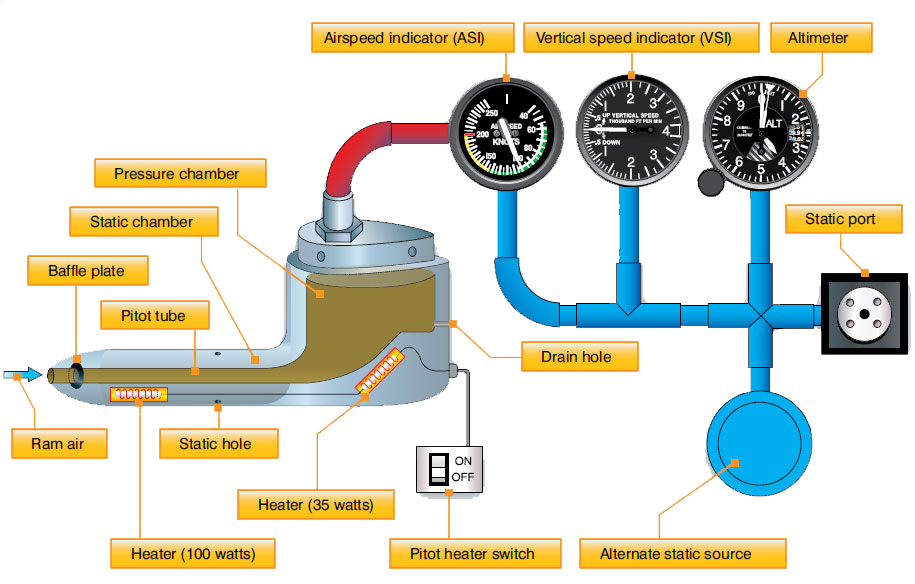Altimeter: Let’s be reminded of how it works
“The Altimeter” is an instrument designed to measure the vertical distance from a reference base. An altimeter can be used to determine how high land or an aircraft is compared to sea level. Invented by Louis Paul Cailletet, a French physicist, after Paul Kollsman, a German-American inventor, improved it. Kollsman’s altimeter can convert barometric pressure into altitude above sea level. He patented it in 1936.
Nowadays, altimeters compare the pressure outside of the instruments to the standard pressure (1013.25 hectopascals (hPa), which is equivalent to 29.92 inches of mercury (Hg)). To do this, it contains a stack of sealed aneroid wafers at standard pressure. It connects to a static port that captures outside air to the device entering the altimeter. This stagnant air has a lower pressure than the normal pressure, leading to an aneroid platelet dilation.
👉 Thanks to Ateq’s® Pitot-Static Testers, aircraft altimeters are always easily and properly calibrated… 👈
A Pitot-Static tester generates pressure or partial vacuum to simulate altitudes and speeds to test the onboard altimeter, speed indicator and if required, the angle of attack sensor. On the aircraft, all these instruments are connected externally to the Pitot tubes or the Static Ports on the outside the aircraft « skin ».
→ We can offer complete solutions including the Cobra System® Adapter Kit.
Need an efficient Pitot-Static Tester? Want to have more information about Ateq® products, feel free to ask us: info@ateq.com






